Weekday train
Fixed wake time, limited minutes and a clear cut-off when you have to leave. This rhythm likes alarms that are precise and repeatable.

Alarm guide
This guide starts with how your mornings feel, not with technical specs. Once you know your rhythm, choosing an alarm from the collection becomes easier and calmer.
Scroll down as if you were moving through one slow morning, from first light to leaving the house.
Morning rhythms
Before you look at features, think about how your mornings usually move. Most people live somewhere between these three simple patterns.
Fixed wake time, limited minutes and a clear cut-off when you have to leave. This rhythm likes alarms that are precise and repeatable.

Softer wake-ups, flexible times and more room to snooze. This pattern suits sunrise alarms and gentle first minutes.
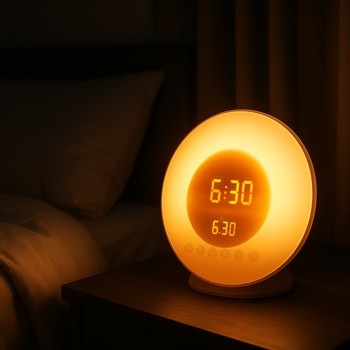
Occasional very early alarms with little margin for error. This rhythm needs alarms that are compact but impossible to ignore.
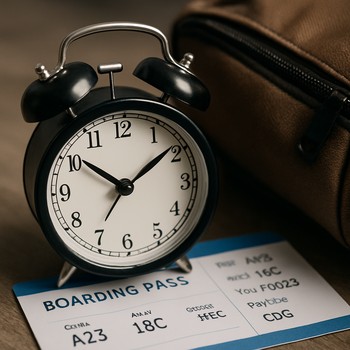
Stages of waking
Good alarms handle the path from half-asleep to fully awake, not just the instant when the sound begins. These three stages appear in many of the clocks on this site.
Soft light or very low sound that reaches you without jolting your nervous system.

A recognisable tone or chime that tells you it is time to sit up, drink water and start moving.
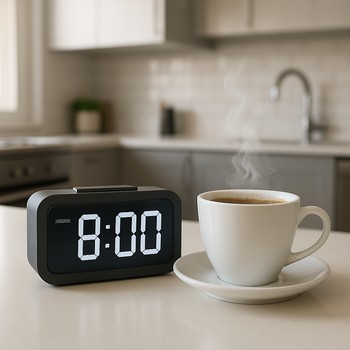
A final reminder after washing and dressing, for the moment you pick up keys and leave.
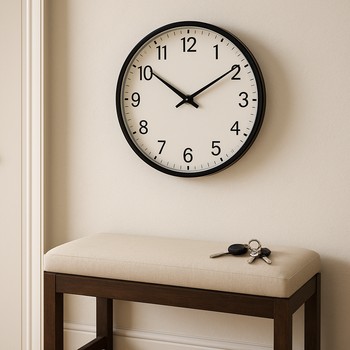
Sound shapes
Two alarms can be equally loud but feel very different. The way a sound starts, rises and stops matters as much as the level on a slider.
Starts almost silent, then slowly climbs. Ideal if you wake up easily but dislike jolts.
Enters at a clear level and keeps it. Good for people who need one firm signal.
Starts with a gentler tone and adds a second layer if you do not respond in time.
Distance & placement
A loud alarm right next to your ear feels different from the same alarm one or two steps away. Placement is a quiet way to adjust how strong a wake-up feels.
Alarm types
Most clocks on Tick & Rise fall into one of these types. Knowing which one you are drawn to makes the collection pages feel lighter.
Mechanical-style ring with a strong personality. Best for people who ignore soft beeps.
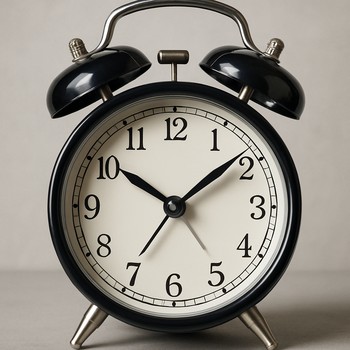
Diffused digits, gentle tones and often a ramp-up sequence instead of a sudden burst.

Light first, sound second. Made for people who want their nervous system to wake very slowly.
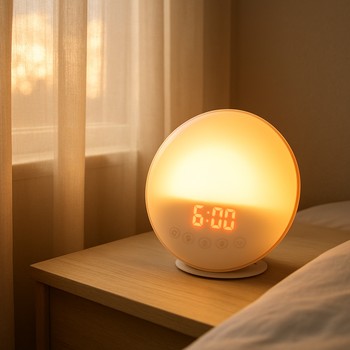
Foldable or pocket-sized alarms that live in bags and come out for trips and guest rooms.
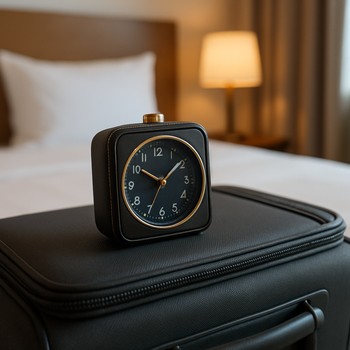
Snooze patterns
Some people never hit snooze, others build soft ladders of short extra minutes. Your pattern quietly decides how strong an alarm has to be.
Household mixes
Alarms rarely live alone. They share rooms with partners, children, pets and different work schedules. The right clock respects the other people in your space.

Two smaller alarms with different tones work better than one loud clock for both.

A hallway wall clock plus softer personal alarms keep mornings polite.

Night-light style alarms help children move through school mornings more gently.
Wind-down routines
The same alarm can feel harsh after a late, restless night and gentle after a calmer evening. A small change in how you end the day can be as effective as buying a new clock.
Let the alarm clock be the last glowing object you see, not a scrolling screen.
Adjust the alarm while lamps are still on so brightness and sound feel right in context.
Before sleep, choose one simple first action when the alarm rings: water, window, stretch.
The clocks on Tick & Rise are built to help, but the way you use them is what makes mornings feel steady instead of rushed.
Bedside layouts
A bedside table can be a quiet platform or a crowded control centre. The same alarm feels different depending on what sits around it.
One clock and one book. Very little visual noise, better for light sleepers.
The lamp marks evening, the clock marks morning. Simple, readable and steady.
A narrow wall shelf keeps the alarm close but off the crowded surface.
Travel & backup
For early trains, new hotel rooms and guest beds, a small dedicated alarm is more reliable than a phone set in a different time zone.
Most compact alarms in the Tick & Rise collection are built to survive bags, repeated time changes and light bumps without losing their setting.
Short checklist
You do not have to know every specification. If you can answer these questions, the collection pages will already feel much easier to read.
Fixed departures need clear, repeatable alarms. Flexible work can live with softer starts.
Partners, children, neighbours and pets all share the sound. Choose a tone that fits them too.
If you stack snoozes, look for alarms that gently increase or move further from the bed.
Some mornings need quiet light, others a firm chime. Many clocks offer a simple mix of both.
Once these answers are clear, you can move back to the home and collection pages and look at only the alarms that match your rhythm instead of every option at once.
Night noise map
The same alarm can feel gentle in one home and too sharp in another. Thin walls, echoes and nearby rooms all change what “loud enough” means.
Safety habits
For exams, early trains or important calls, many people quietly keep a second alarm. It does not have to ring every day — only when the stakes are higher.
A small wind-up or battery alarm that does not depend on wi-fi, apps or software updates.
If your phone stays in another room, the backup alarm carries the responsibility alone.
On Tick & Rise, some compact alarms are designed specifically as quiet backups for rare, important days.
Age & style
There is no strict rule, but some patterns appear again and again. Think of the people who will use the alarm, not just the room where it stands.

Often need clearer, slightly louder alarms that cut through late-night study habits.
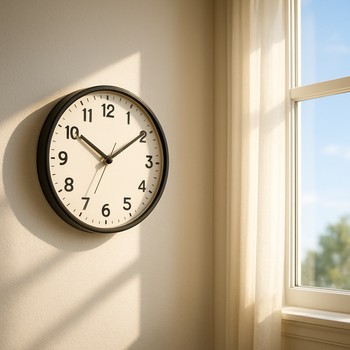
People with quieter routines often prefer softer chimes and larger, easier-to-read dials.
The same clock can serve different ages well, but thinking about who will actually touch the snooze button helps you select a design that fits the whole household.
One-week test
Instead of judging an alarm after one rushed morning, give it a quiet week. Each small step below is meant to be realistic for busy days, not a perfect routine.
Keep your current alarm exactly as it is. Notice how you feel in the first ten minutes after it rings: heavy, neutral, calm, tense. Do not change anything yet.
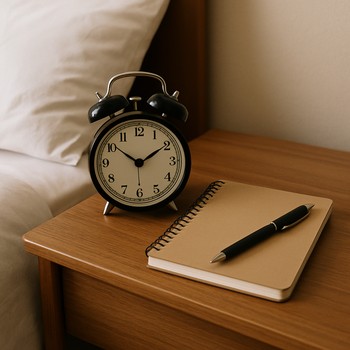
Move the alarm slightly closer or further and change only one thing: sound level or tone. Keep the rest of the room the same.

By the end of the week, choose one setting and placement that felt most humane. That becomes your new default, not something you change every few days.

Putting it together
You have looked at rhythms, sound shapes, households, travel and backup alarms. The next step is simple: decide how you want mornings to feel, then let the clocks follow.
Focus on sunrise-style and soft digital alarms in the Tick & Rise collection. They are easier on nerves and match slower, quieter starts.
Look for classic twin-bell and firmer digital alarms with simple controls. They support strict wake times and early departures.
You can return to this guide whenever your routine changes — a new job, a move, a new person in the house. The clocks will still be here, waiting to match the new mornings.